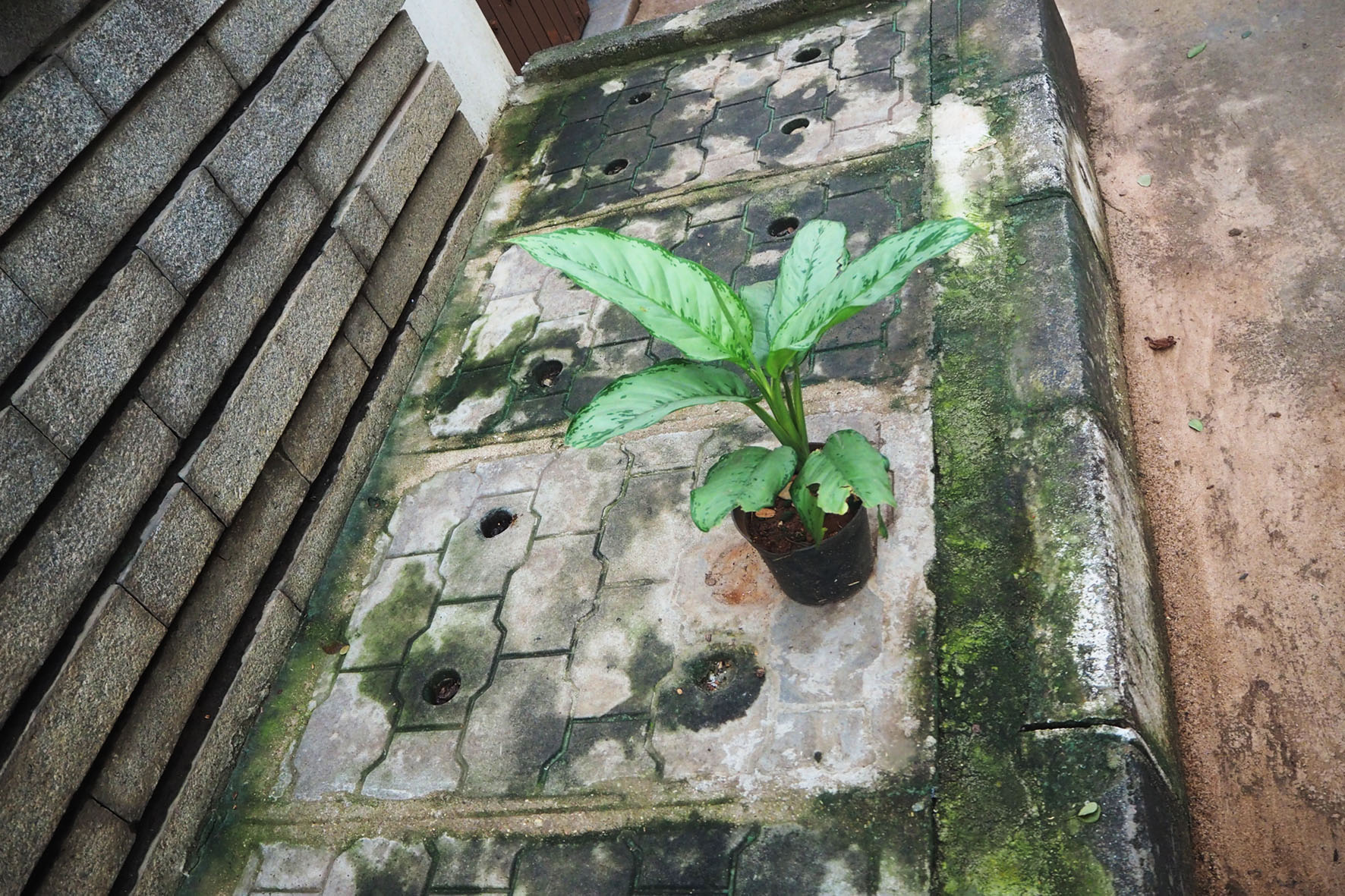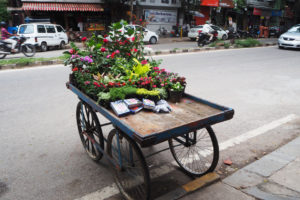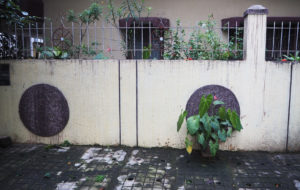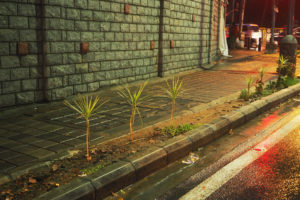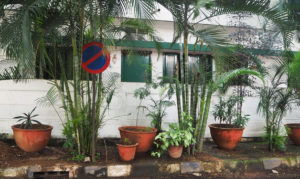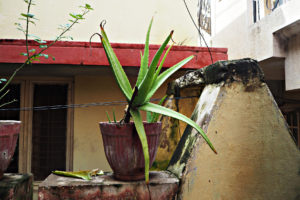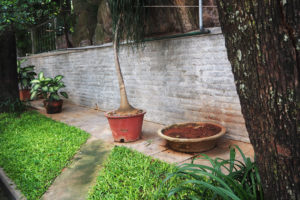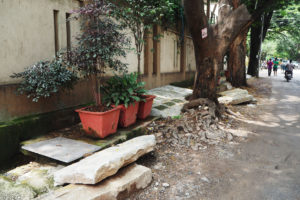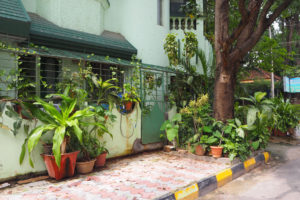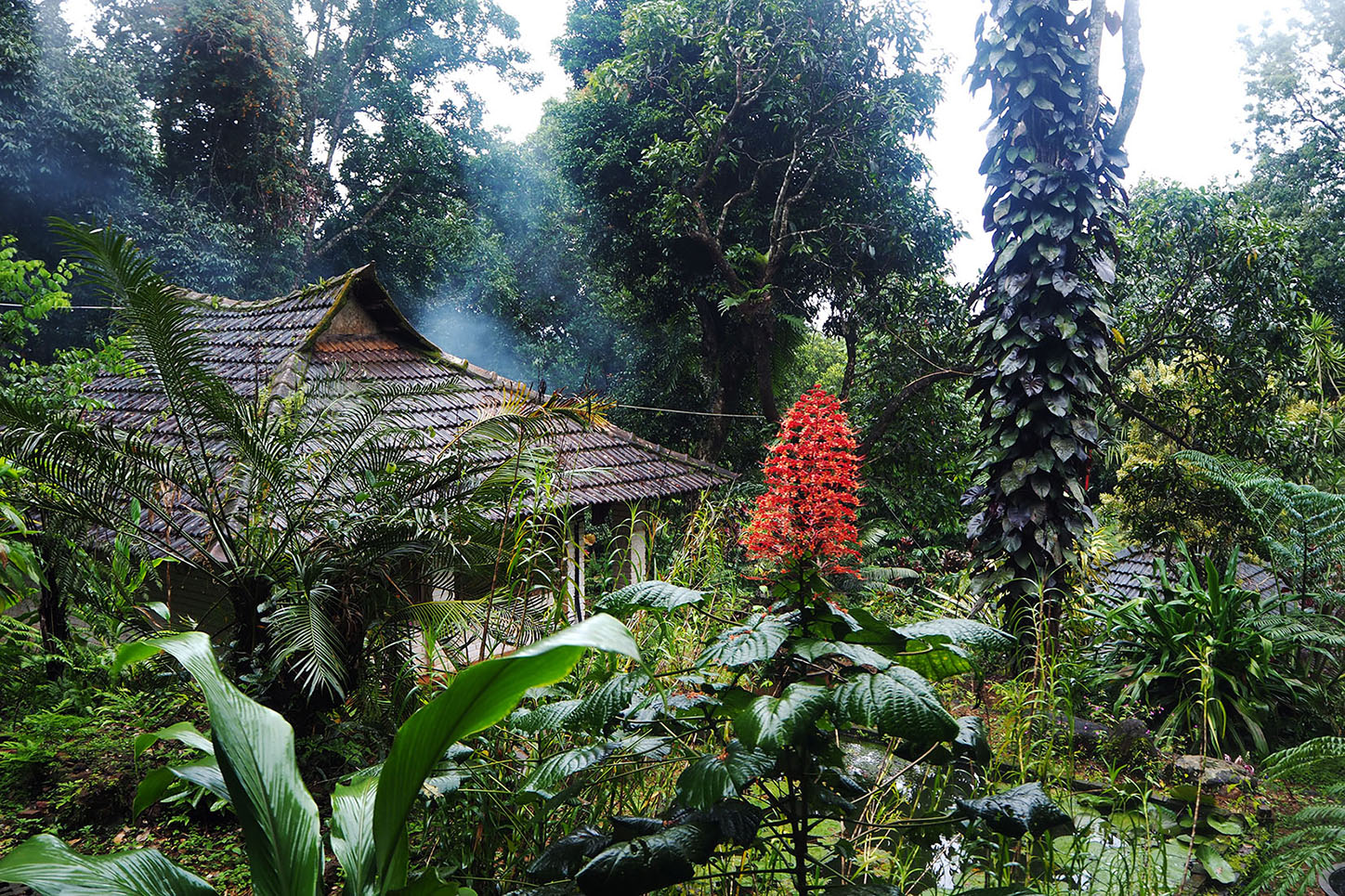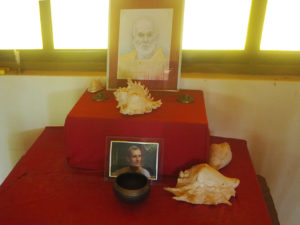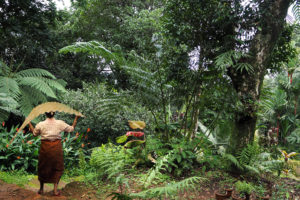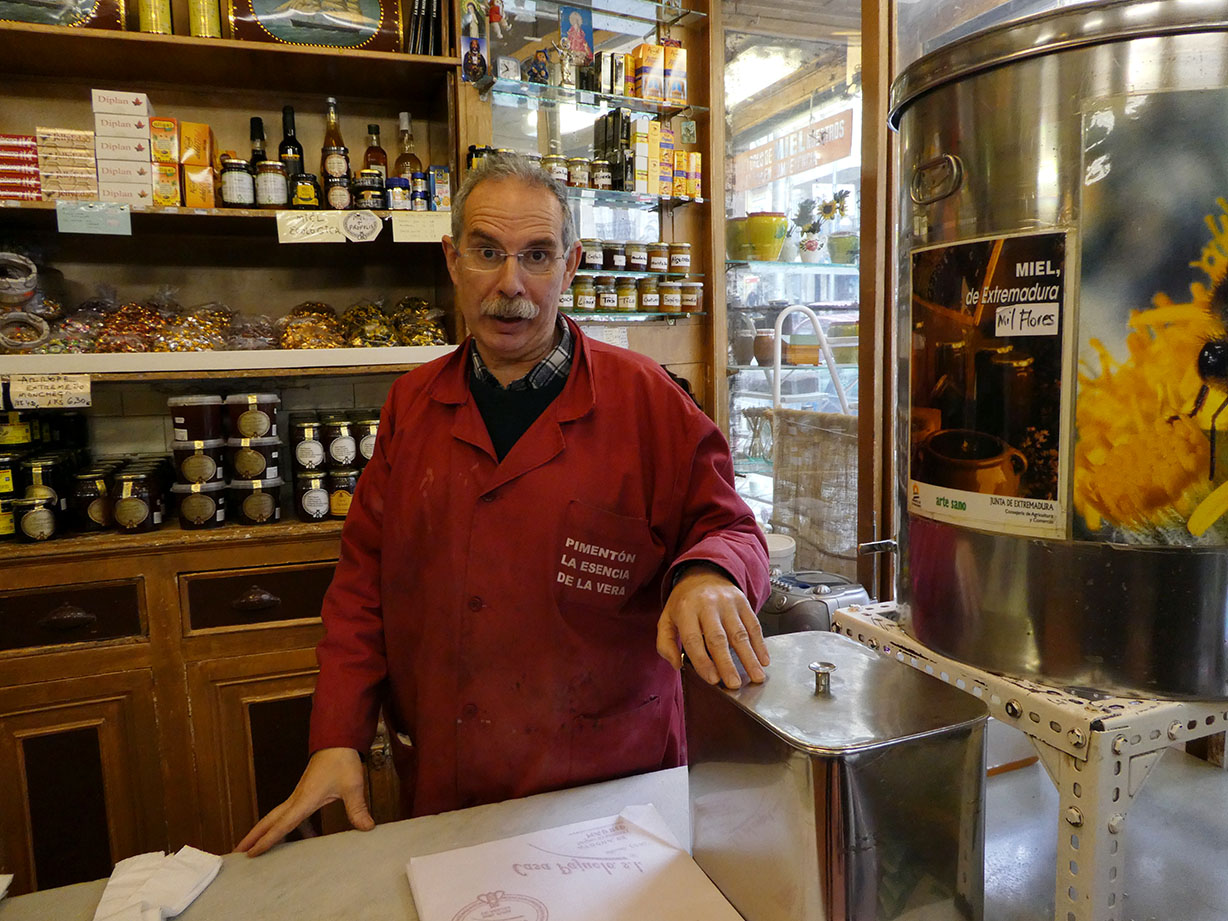 (Übersetzung folgt) La Casa de la miel has been in the hands of his family ever since the shop was founded in 1942, its owner, Pedro Pajuelo, says. We are standing in front of the counter, a black board next to the door shows the different kinds of honeys sold here, a shiny bin with a giant bee printed on it decorate the counter as well as an old-fashioned scale made from white enamel.
(Übersetzung folgt) La Casa de la miel has been in the hands of his family ever since the shop was founded in 1942, its owner, Pedro Pajuelo, says. We are standing in front of the counter, a black board next to the door shows the different kinds of honeys sold here, a shiny bin with a giant bee printed on it decorate the counter as well as an old-fashioned scale made from white enamel.
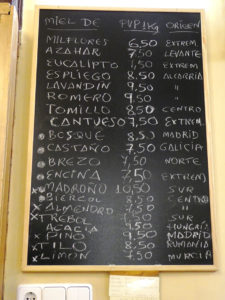
Two other men work here, one of them dusts the shelfs with the honey glasses with a feather mop, the other walks to and fro between the back rooms and the counter. An old lady enters and asks for a bag of bean seeds.
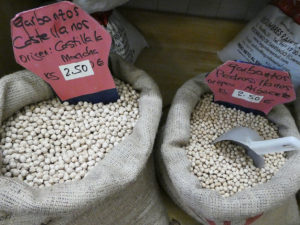
La Casa de la Miel does not only sell honeys from different regions of Spain, but also vegetable and flower seeds, teas, herbs, pimiento and other spices, cosmetics made from honey and pollen (the best quality is stored in a fridge in the corner). There are also little boxes with violet sweets in them in the color of violets! A speciality of Madrid, Pedro explains.
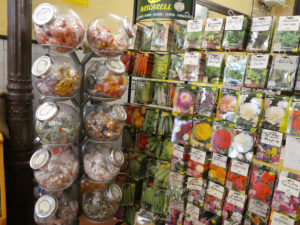
But of course, we talk about honey, its origins, how prices rise with the decrease in production because of the bee pests. If the bees die, we’ll have nothing to eat after no time, Pedro says, maybe five years, no more.
The conversation is in Spanish, I ask and Alberto assists with translation. 300 words in Spanish seem to equal 30 in English. I understand fragments and then, at times, I have no clue. Yet, this recording is for Datscha Radio Madrid, and almost a third of the world’s population speaks Spanish anyway :)
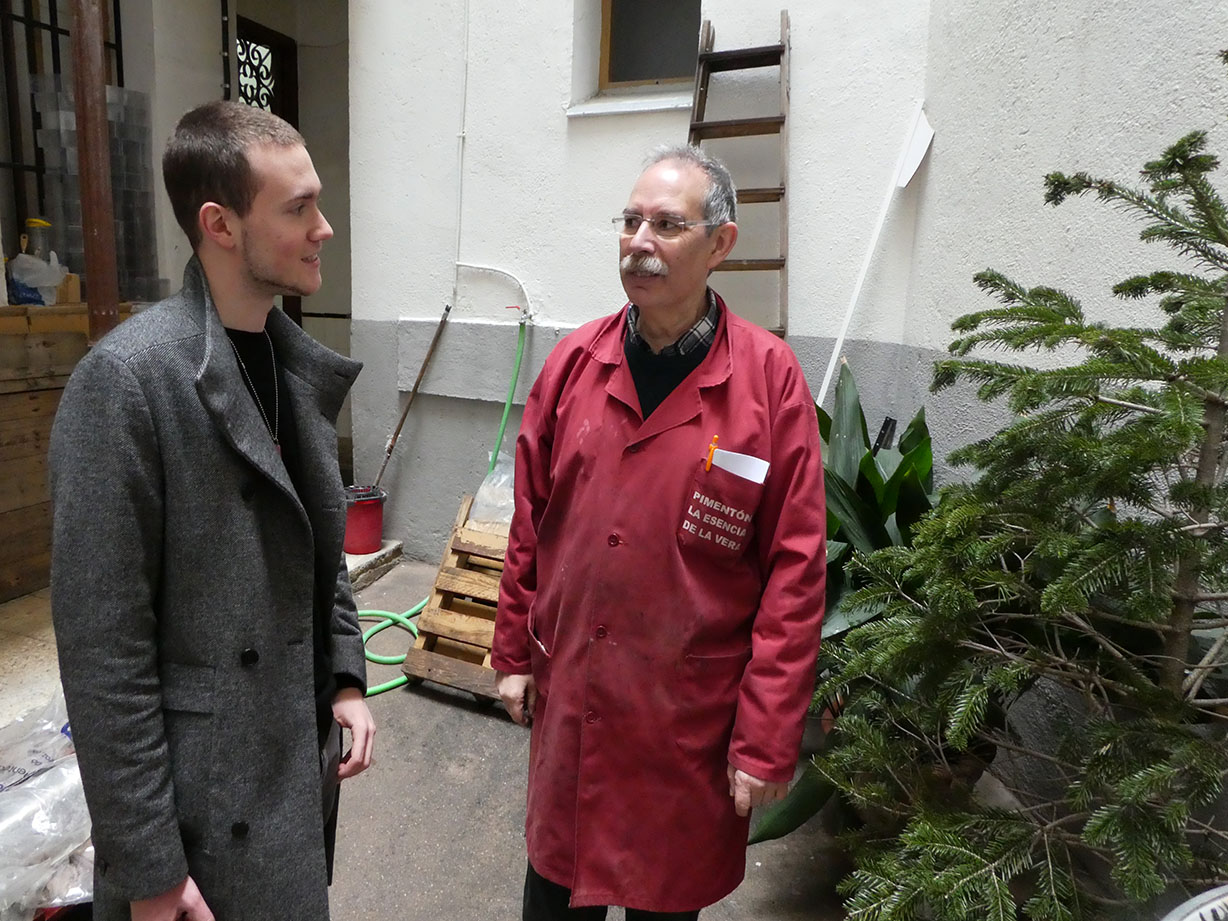
It is a rule with interviews that when the moment comes you think it is finished, the real info are preisgegeben. He hands us both a jar of honey com regalo, I present my flyers with the Adopt a Plant thing happening this Saturday and upon this information Pedro reveals himself as being a gardener too.
“Realmente me gustan las plantas. Come come…“
Alberto and I get invited to follow him to the store rooms in the back of the shops where huge barrels of honey sit on a tiled floor and a machine to knead the honey to a more fluid consistency dominates the room. We enter the patio of the house which belongs to the few still in their original architecture existing ones in Madrid: made of wood and stone but with a metal skeleton inside.
In the patio plants are lined up, lush green leaves, palm like. An „Indian plant“ was saved here from being thrown away. This is also the habitat of an ex-Christmas tree which seemingly thrives at his now home. And there is still another patio filled with Trandesceana, begonias and “bad mothers”. So there’s a secret gardener! Pedro explains that he likes to pick up the remnants or off shoots from neighbors plants falling into the yard. He gives them a new home and cares for them.

Then one of his shop attendants calls out about an important customer having just arrived, and we say goodbye and step out of the House of Honey into Atocha Street.
Read More







 (Übersetzung folgt) Here’s a very quick update on what is happening in Madrid with Datscha Radio – and an diary of how I spent my day so far.
(Übersetzung folgt) Here’s a very quick update on what is happening in Madrid with Datscha Radio – and an diary of how I spent my day so far.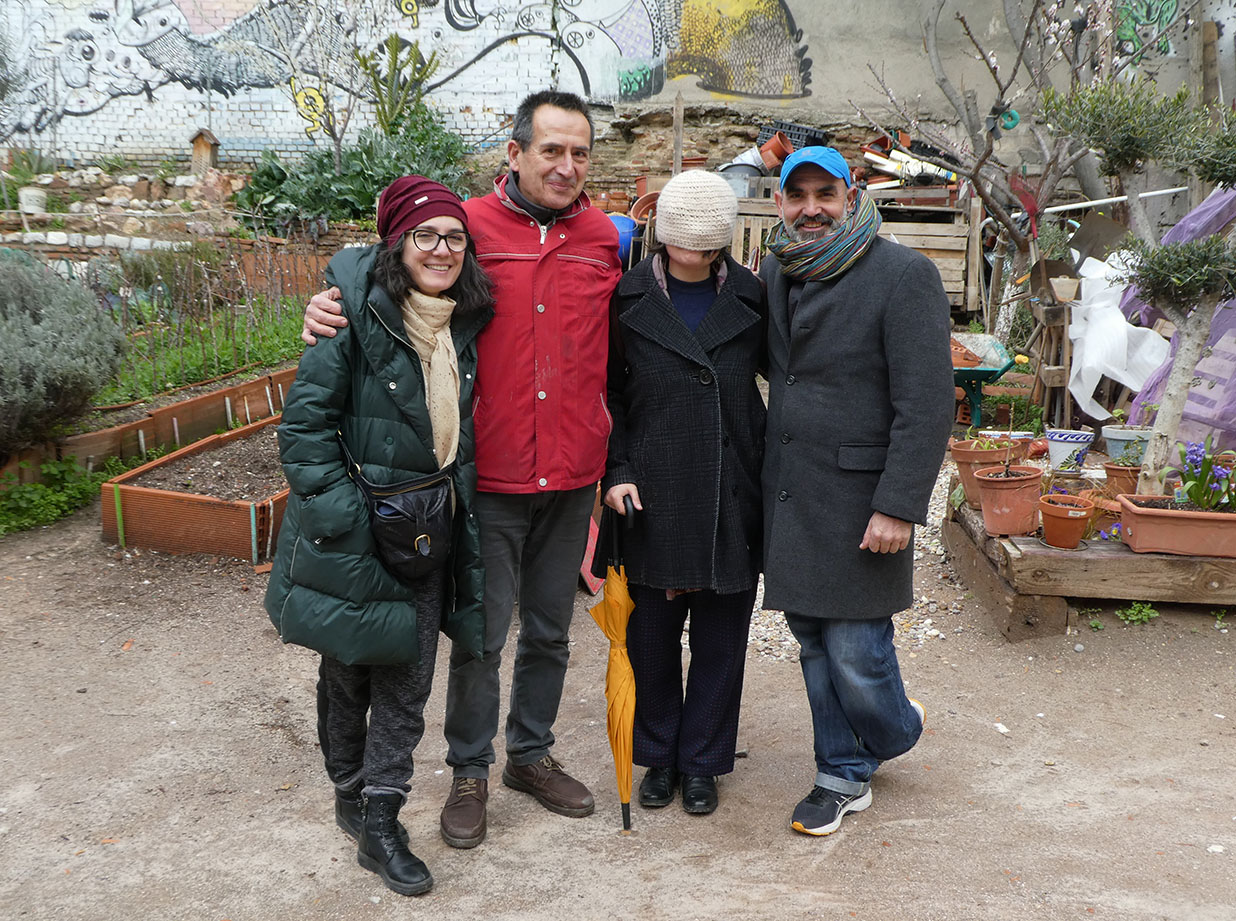

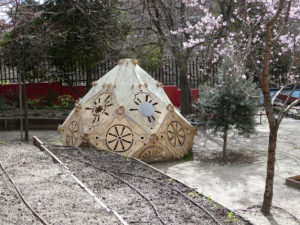
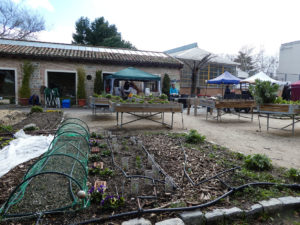
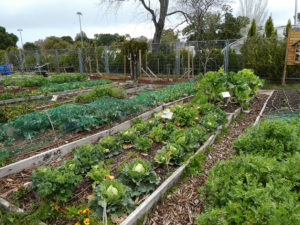
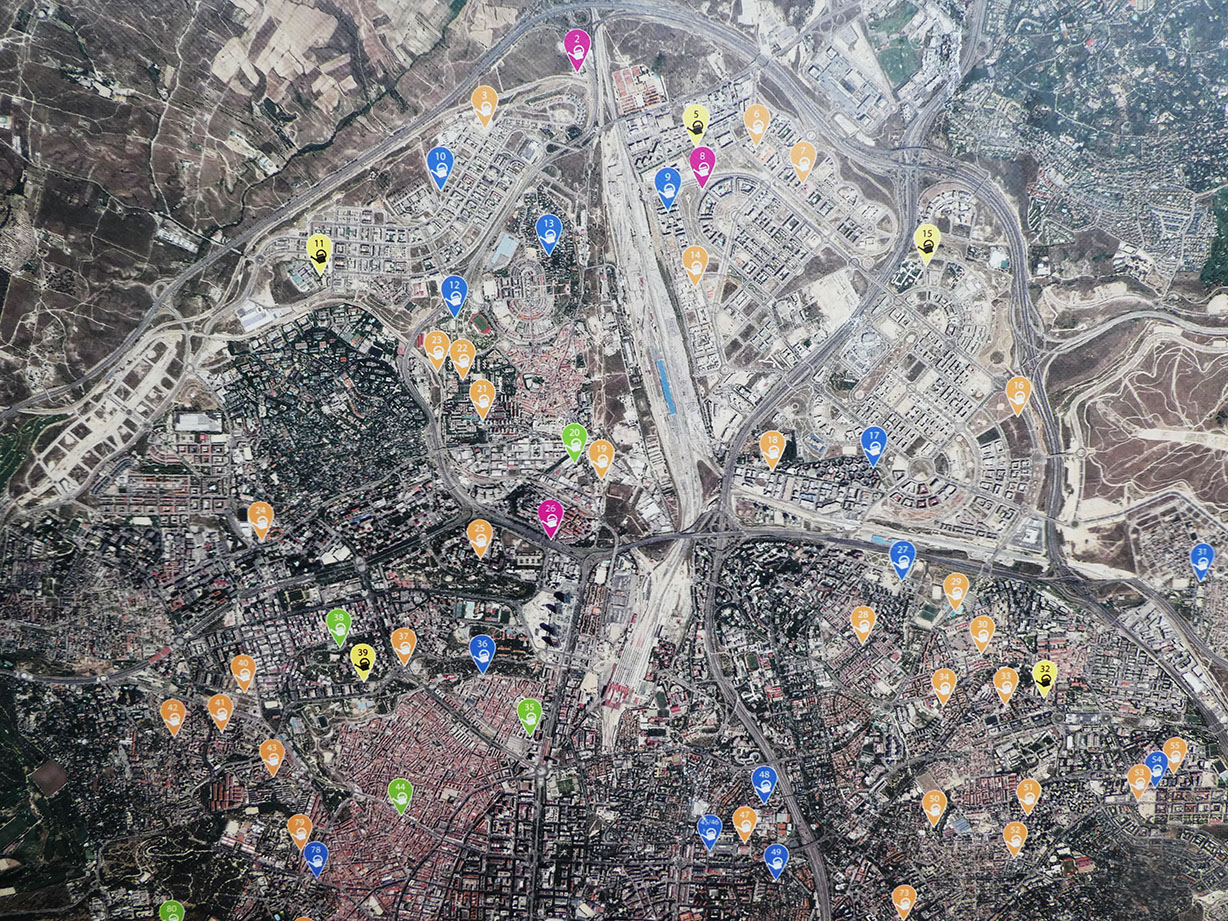
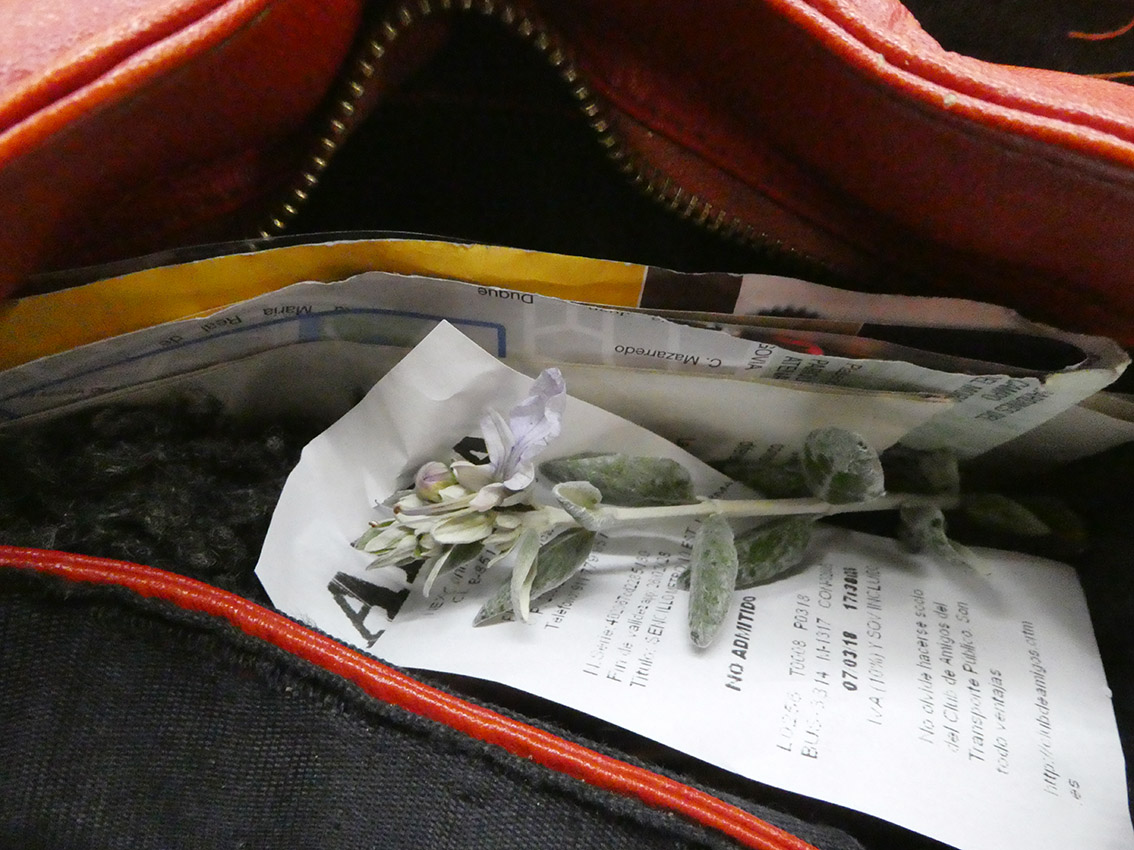
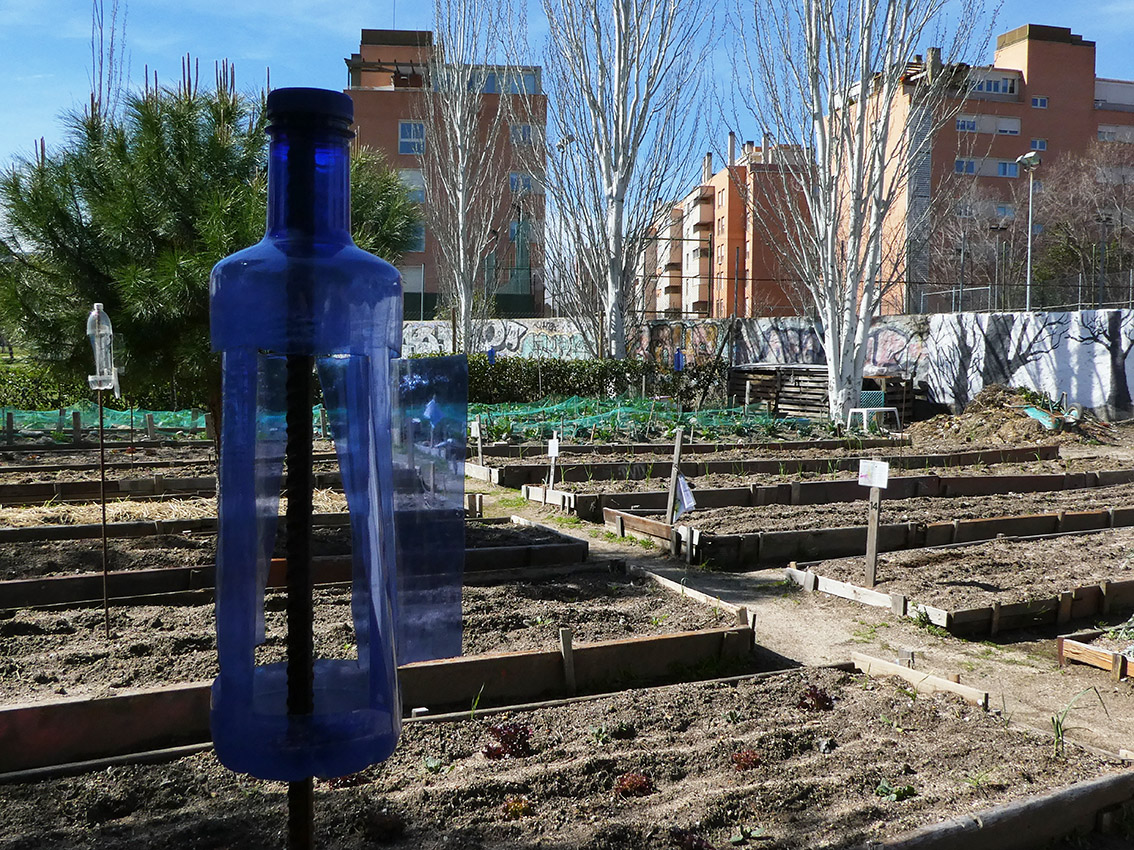
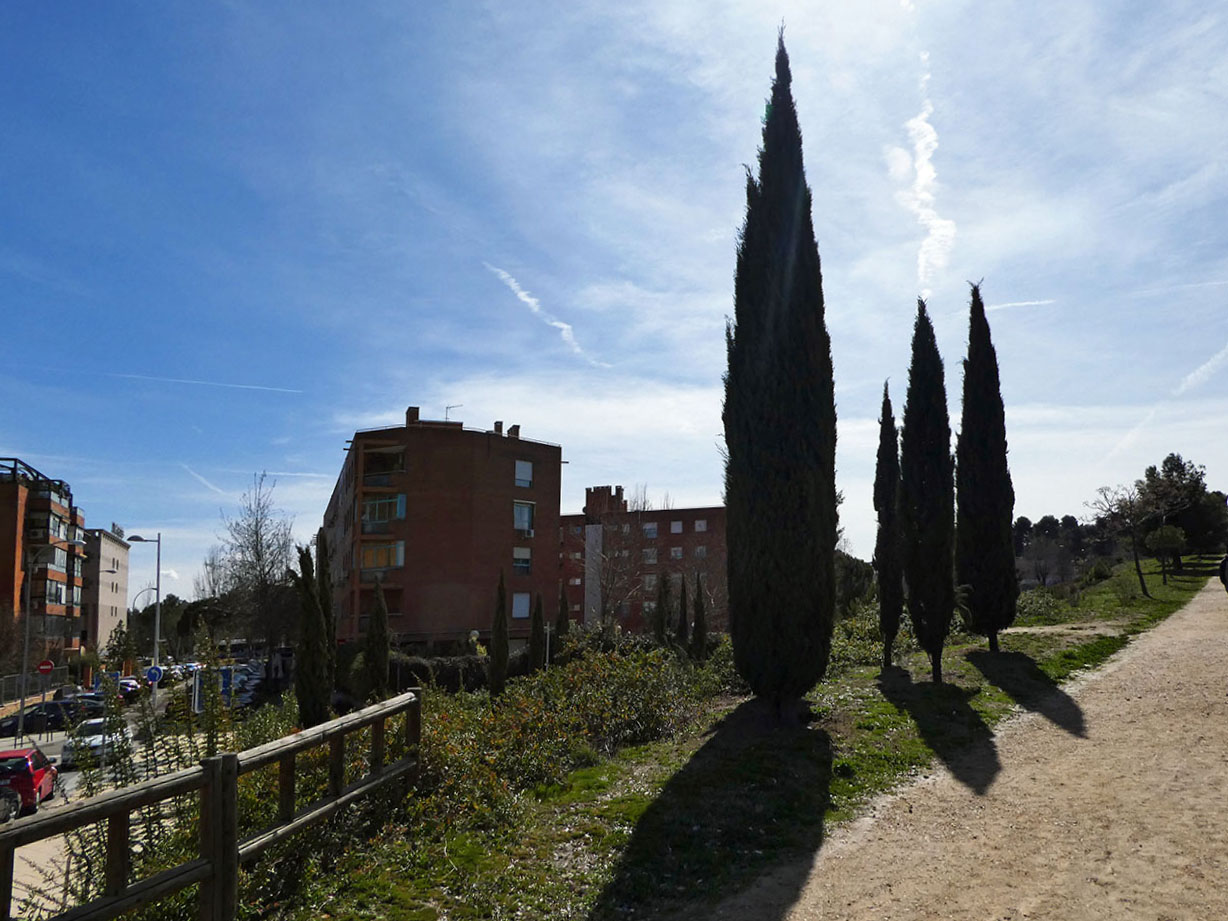
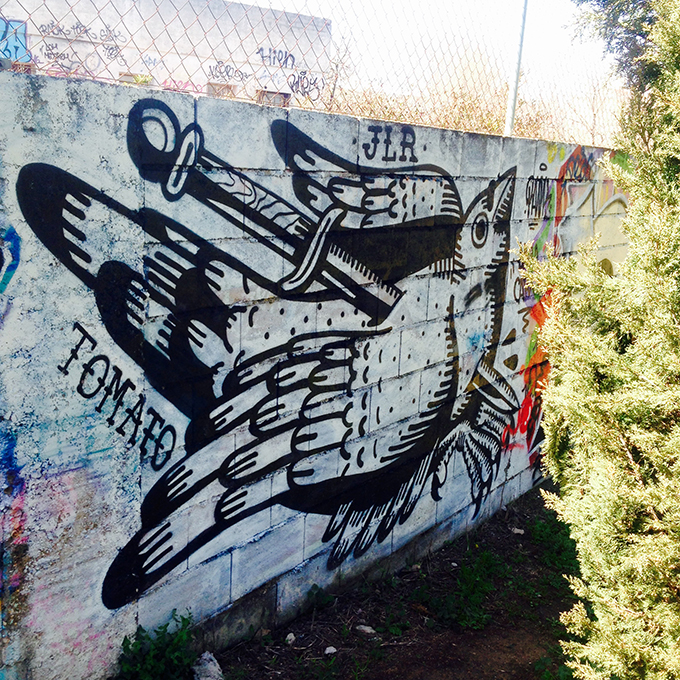
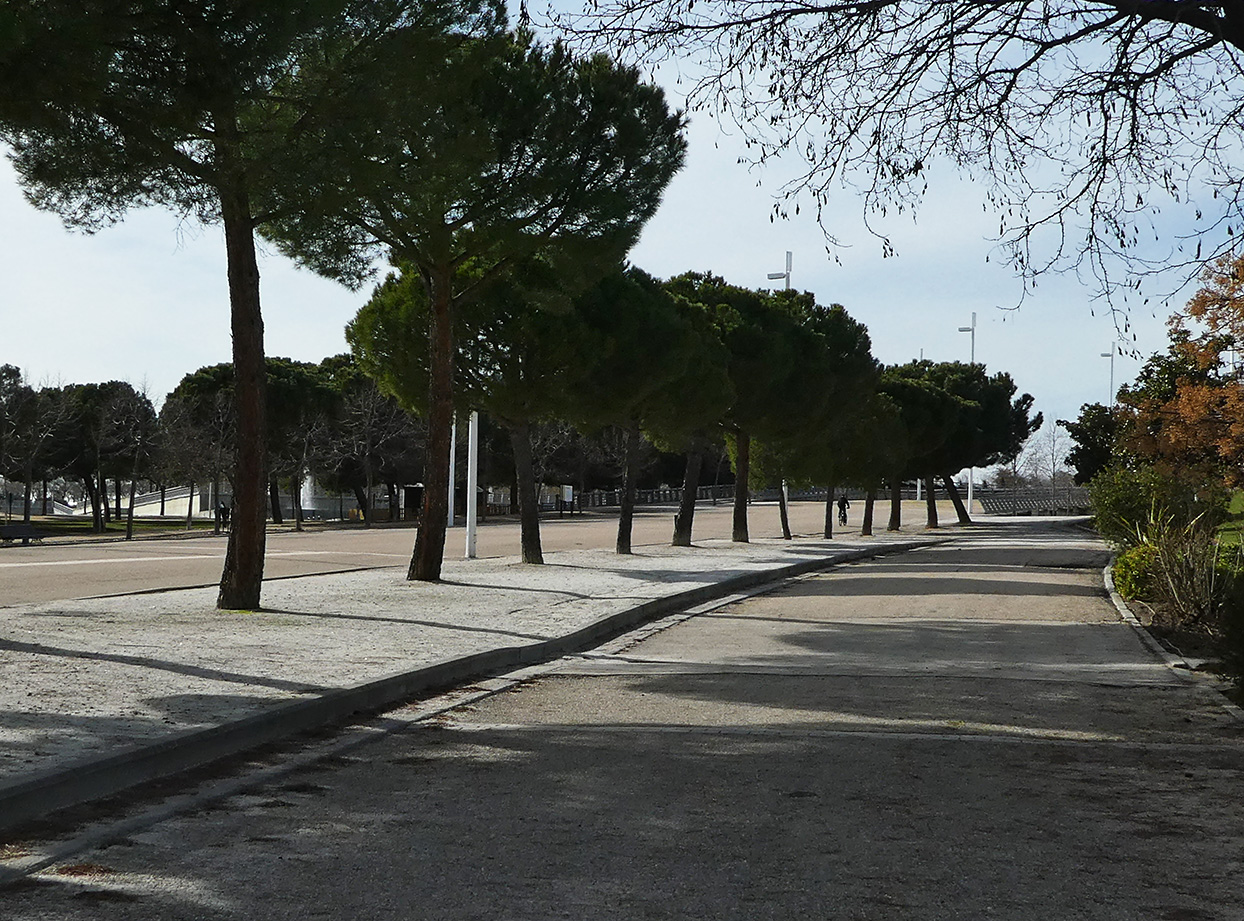
 (Übersetzung folgt) A most depressing sight for all not plant-affine persons: A rose garden in early spring! Prickly bare sticks sprouting from grey-brown knotted knobs, one next to the other, the very image of bristly boredom. Quite different so for the rose lover: She or he wanders among the plots, reading the signs with avid interest and from time to time sends out deep mental sighs of expectation in view of „Red Mozart“ or „Conquistador“ or „Boule de Neige“. I see names I never read before in any books or on websites. No wonder, since La rosaleda de Ramón Ortiz“ features an important collection of varieties of Spanish roses, and the garden also serves as a test plot to see how these roses handle the Spanish climate.
(Übersetzung folgt) A most depressing sight for all not plant-affine persons: A rose garden in early spring! Prickly bare sticks sprouting from grey-brown knotted knobs, one next to the other, the very image of bristly boredom. Quite different so for the rose lover: She or he wanders among the plots, reading the signs with avid interest and from time to time sends out deep mental sighs of expectation in view of „Red Mozart“ or „Conquistador“ or „Boule de Neige“. I see names I never read before in any books or on websites. No wonder, since La rosaleda de Ramón Ortiz“ features an important collection of varieties of Spanish roses, and the garden also serves as a test plot to see how these roses handle the Spanish climate.












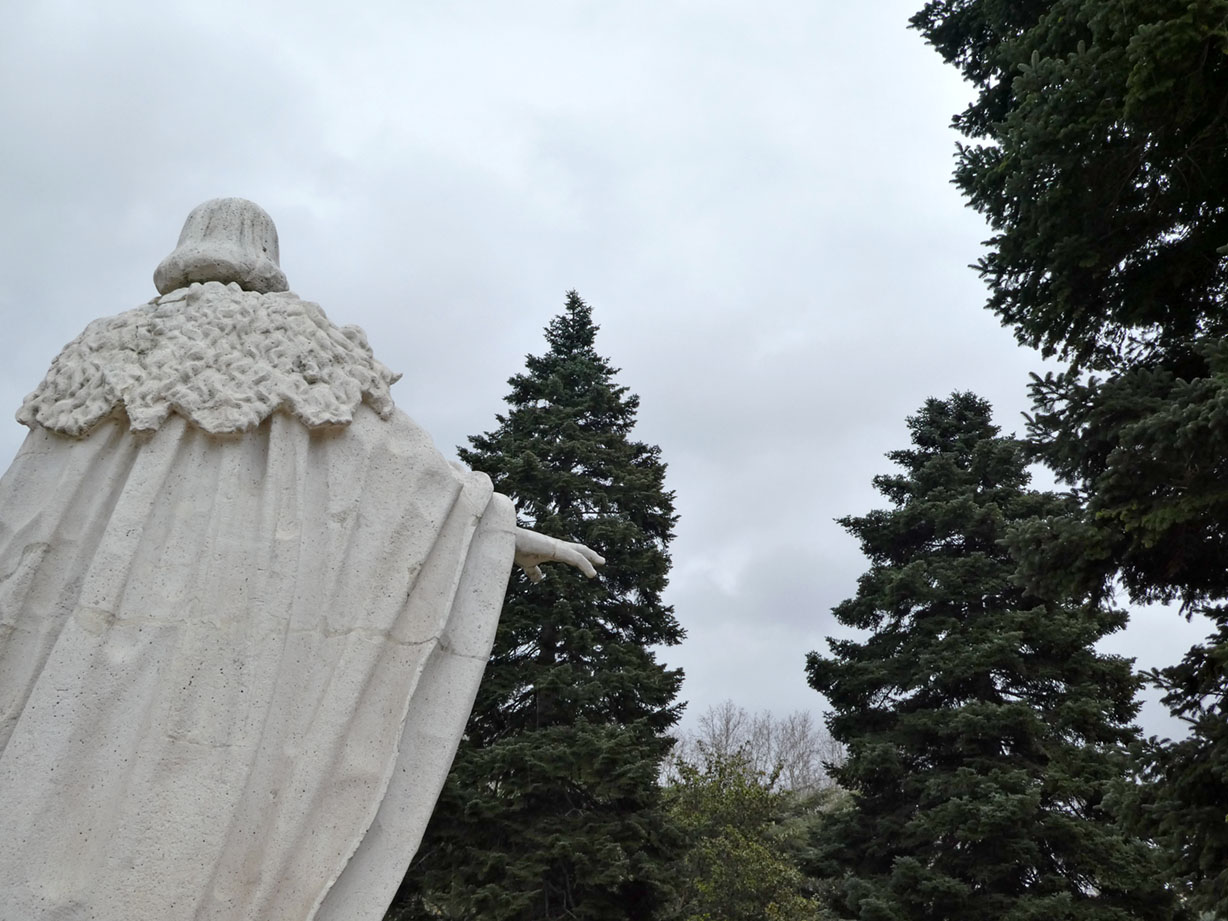



















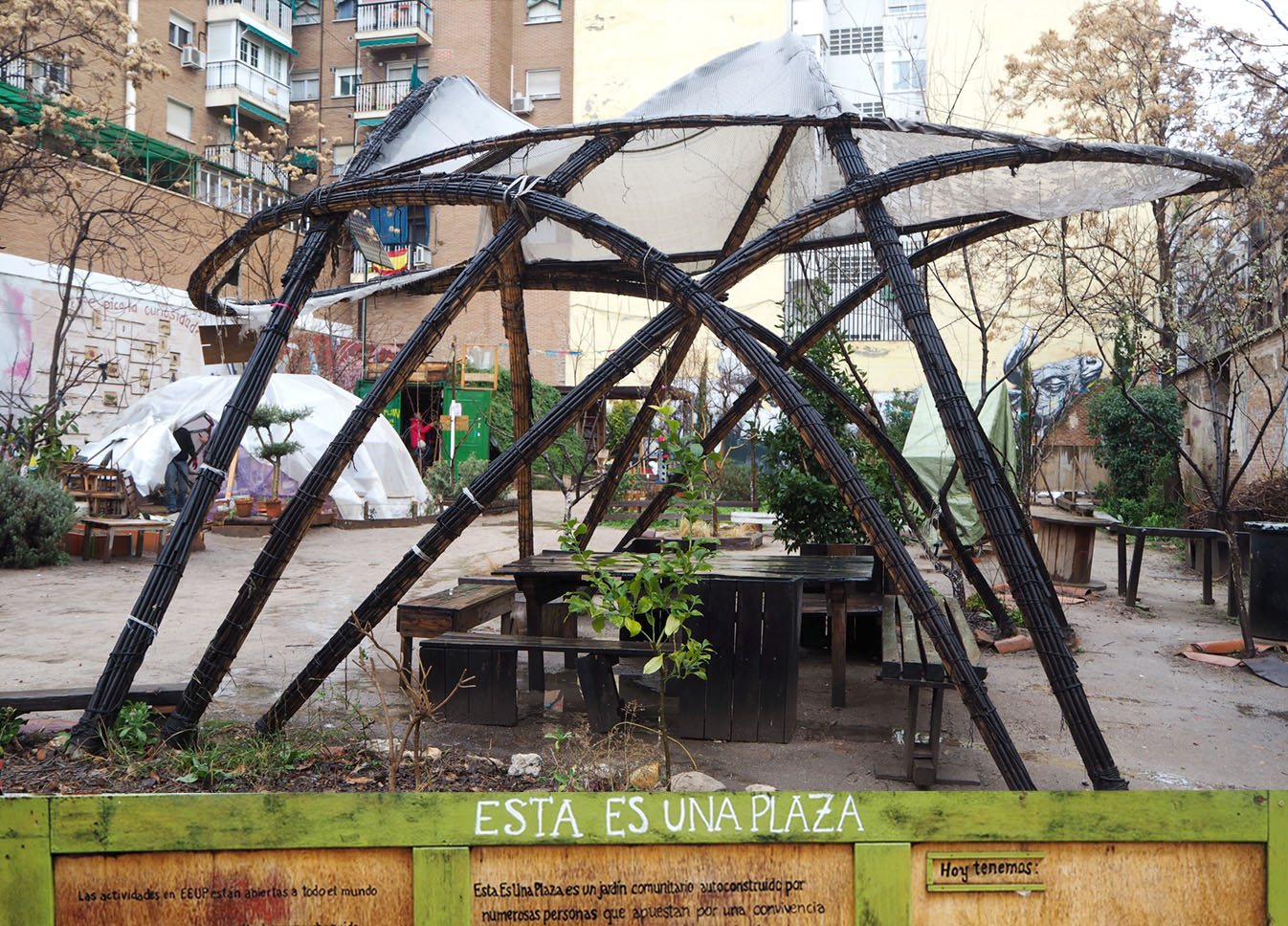 ¡Hola Jardineros!
¡Hola Jardineros! 



























